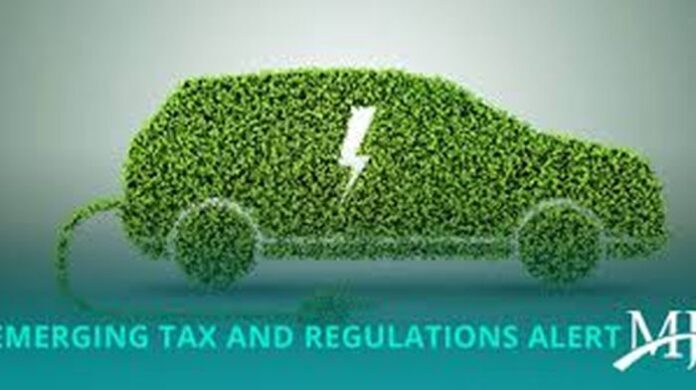The US Department of the Treasury and Internal Revenue Service (IRS) released final rules on the clean vehicle provisions of the Inflation Reduction Act (IRA).
After careful consideration of the extensive public feedback received in response to the proposed rules, the Treasury Department and the IRS are providing definitions and rules regarding taxpayer and vehicle eligibility for the credit for new clean vehicles and the previously-owned clean vehicle credit.
The rules also address the critical minerals and battery components requirements and Foreign Entity of Concern (or “excluded entity”) restriction that were added to the clean vehicle credit by the IRA.
Concurrently with the final rules, the Department of Energy (DOE) is also releasing final interpretive guidance related to the definition of Foreign Entity of Concern for purposes of the 30D clean vehicle credit and the battery manufacturing grant program created by the Bipartisan Infrastructure Law.
The release also includes rules for transferring the 30D clean vehicle credit of up to $7,500 and 25E previously owned clean vehicle credit of up to $4,000 to registered dealers. This mechanism created by the IRA is already extending the reach of the credits by making the credit available at the point of sale rather than when buyers file their taxes.
Researchers have found that consumers overwhelmingly prefer an immediate rebate at point of sale. So far this year, more than 100,000 credits have been transferred at the point of sale, representing more than $700 million in upfront savings for consumers.
These rules provide for robust program integrity measures, including upfront review of compliance with both critical mineral and battery component requirements and the FEOC restrictions starting this summer. The IRS, with analytical assistance from DOE, will conduct upfront review of documentation and certifications addressing materials sourcing requirements to ensure that qualified manufacturers are accurately representing their battery contents.
In addition, the final rules confirm that taxpayers may rely on vehicle eligibility information provided by manufacturers so that taxpayers are not penalized for manufacturers mistakes.
Calculating $3,750 critical minerals credit. For determining qualifying critical mineral content for purposes of the critical minerals requirement, the release provides a new test—the traced qualifying value add test. Under this test, manufacturers must conduct a detailed supply chain tracing to determine the actual value-added percentage for extraction, processing, and recycling. The actual percentage is used to determine the value for the applicable critical mineral that is qualifying. Manufacturers may continue to use the 50% roll up described in the proposed regulations as a transition rule until 2027.
Foreign Entity Of Concern. For the Foreign Entity of Concern (FEOC) restriction, the final regulations make permanent the allocation-based accounting rules for applicable critical minerals contained in a battery cell. The final regulations also identify certain impracticable-to-trace battery materials. As tracing standards and capabilities develop, qualified manufacturers may temporarily exclude these battery materials from FEOC due diligence and FEOC compliance determinations until 2027.
To take advantage of the FEOC transition rules for impracticable-to-trace battery materials, qualified manufacturers must submit a report during the upfront review process noted above, demonstrating how the qualified manufacturer will comply with the FEOC restriction once the transition rule is no longer in effect.




